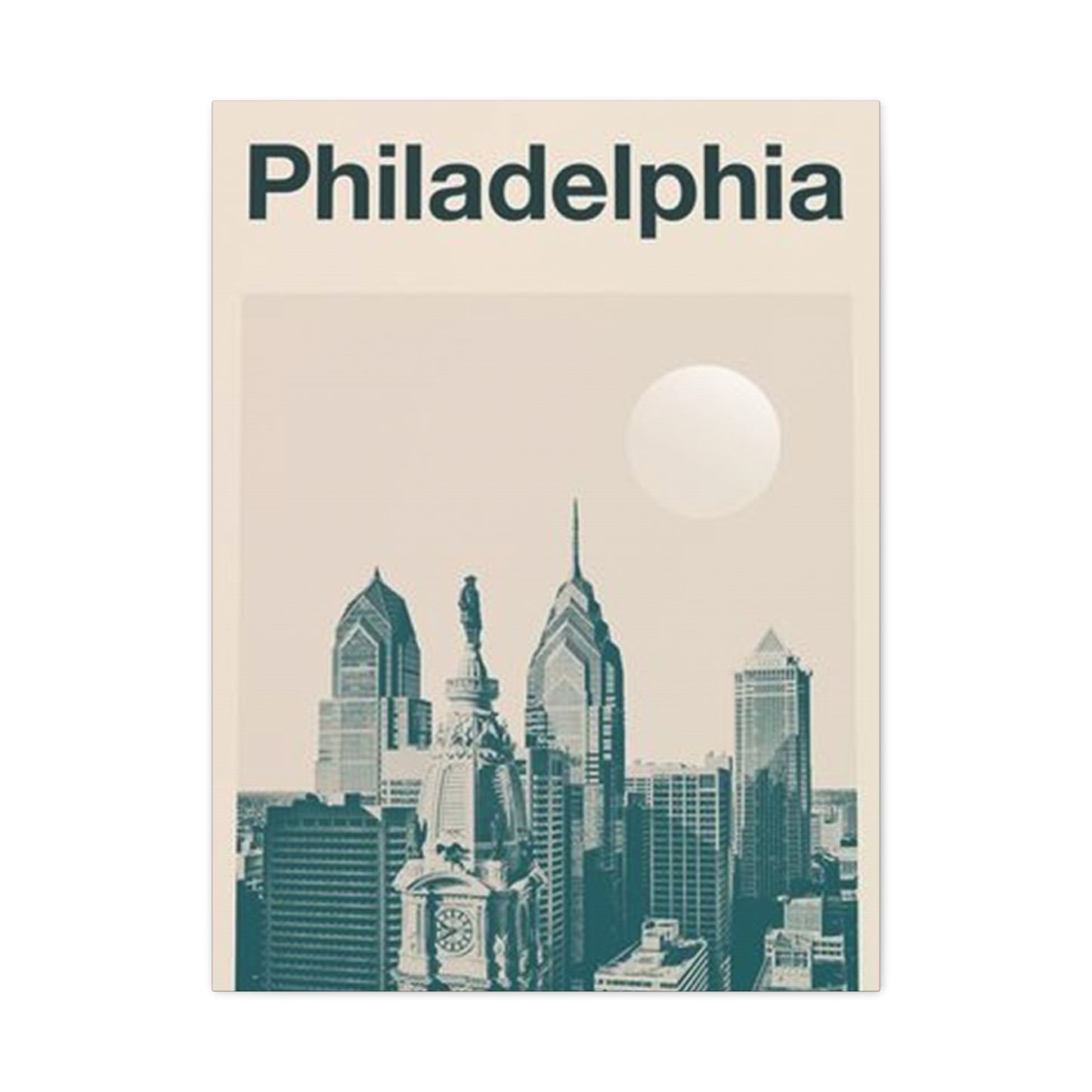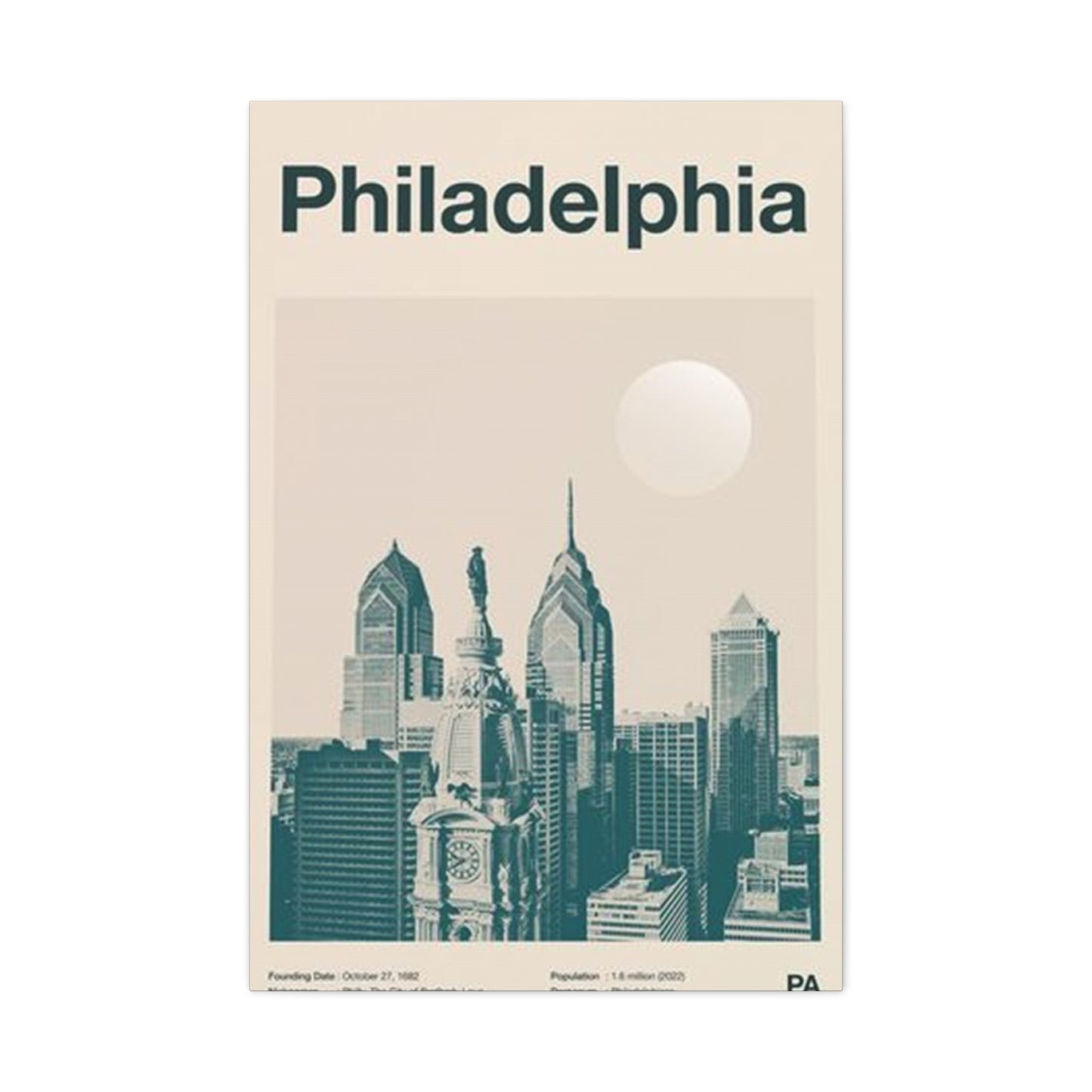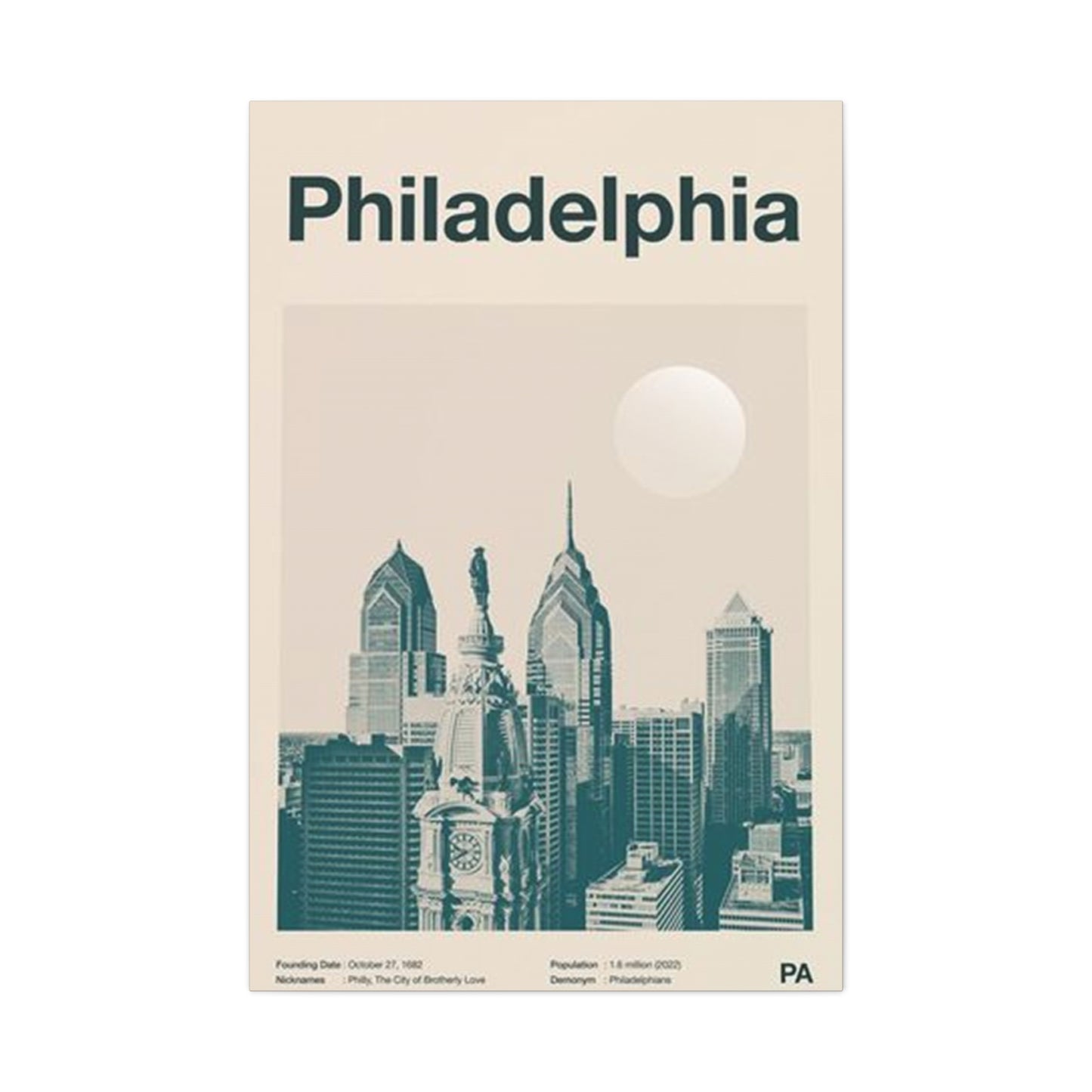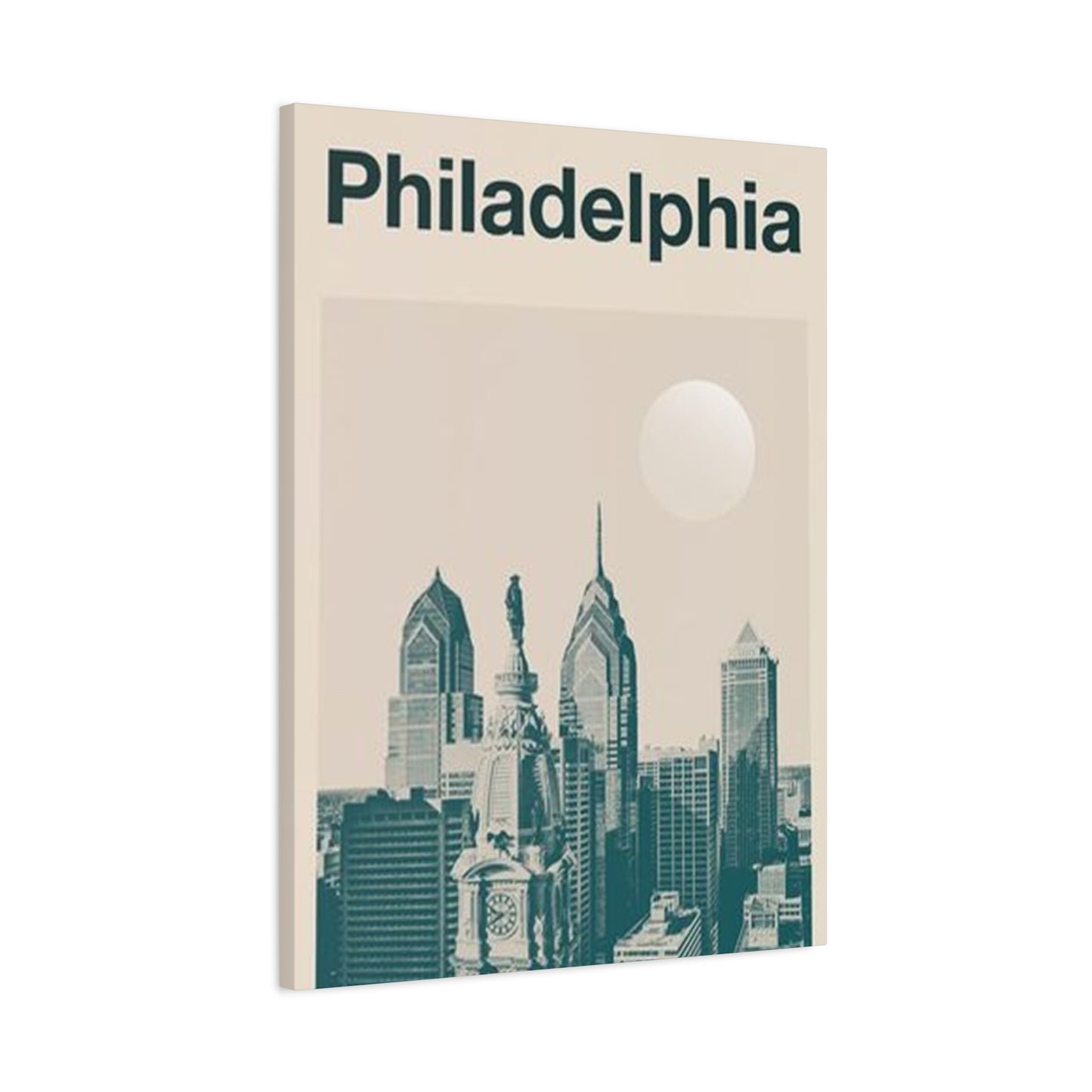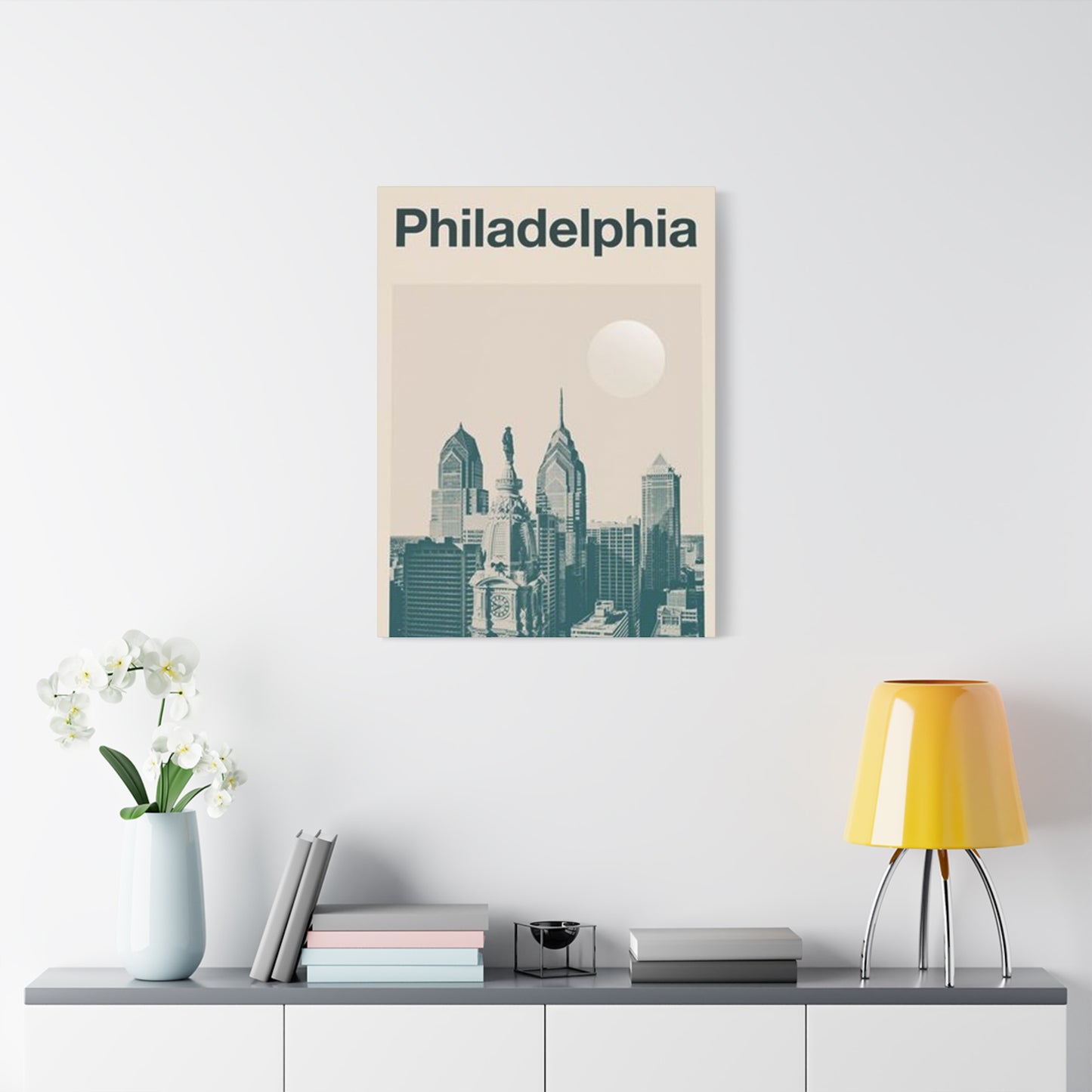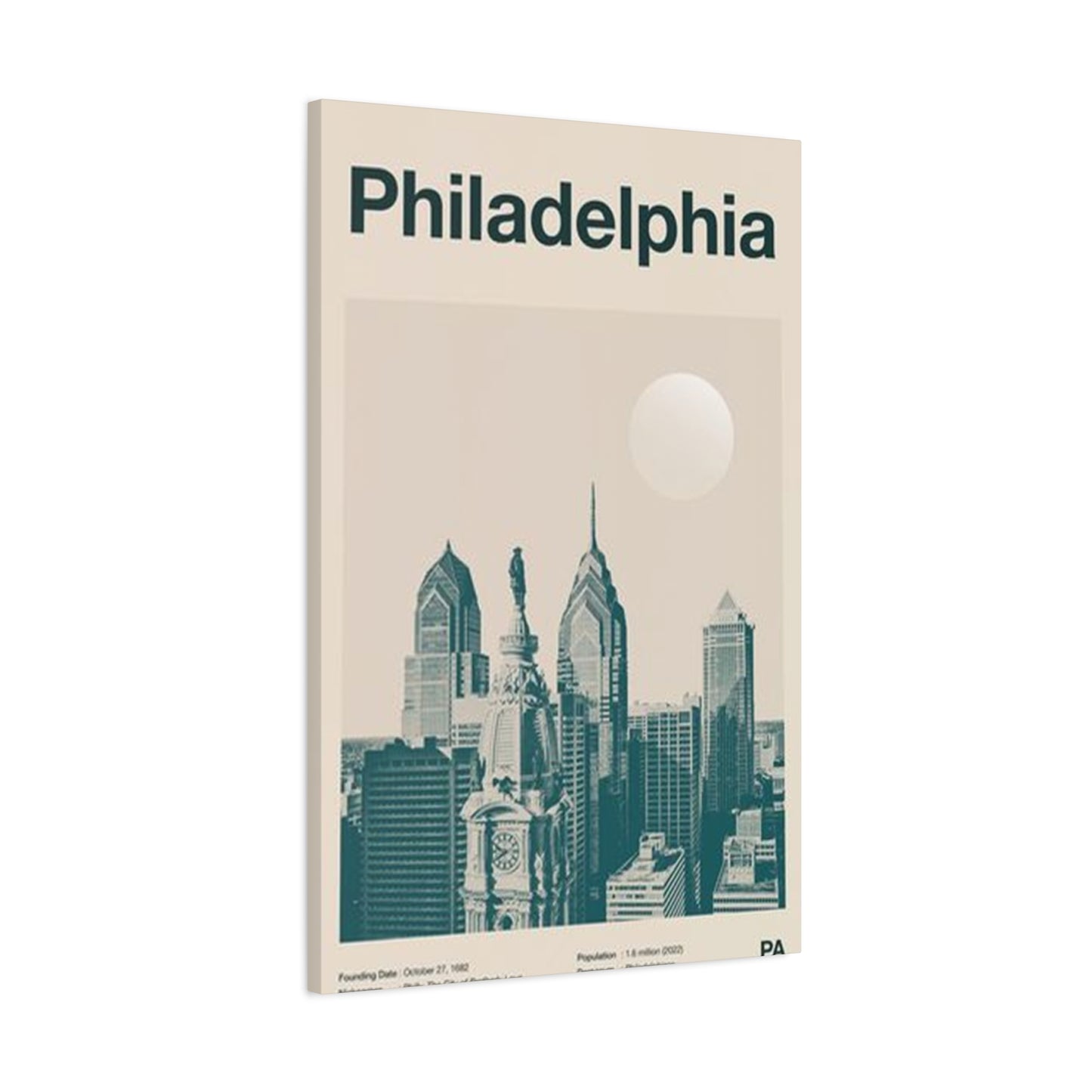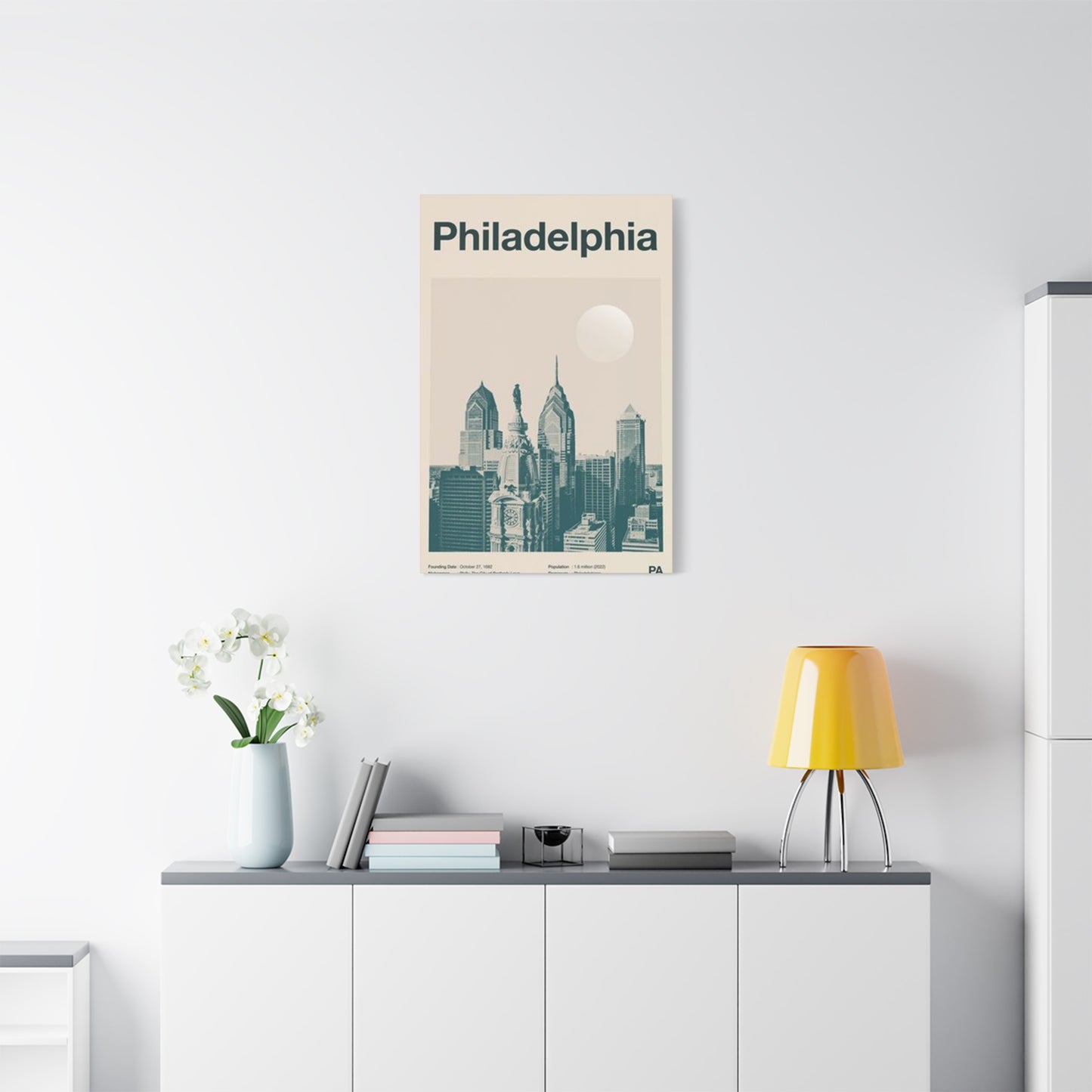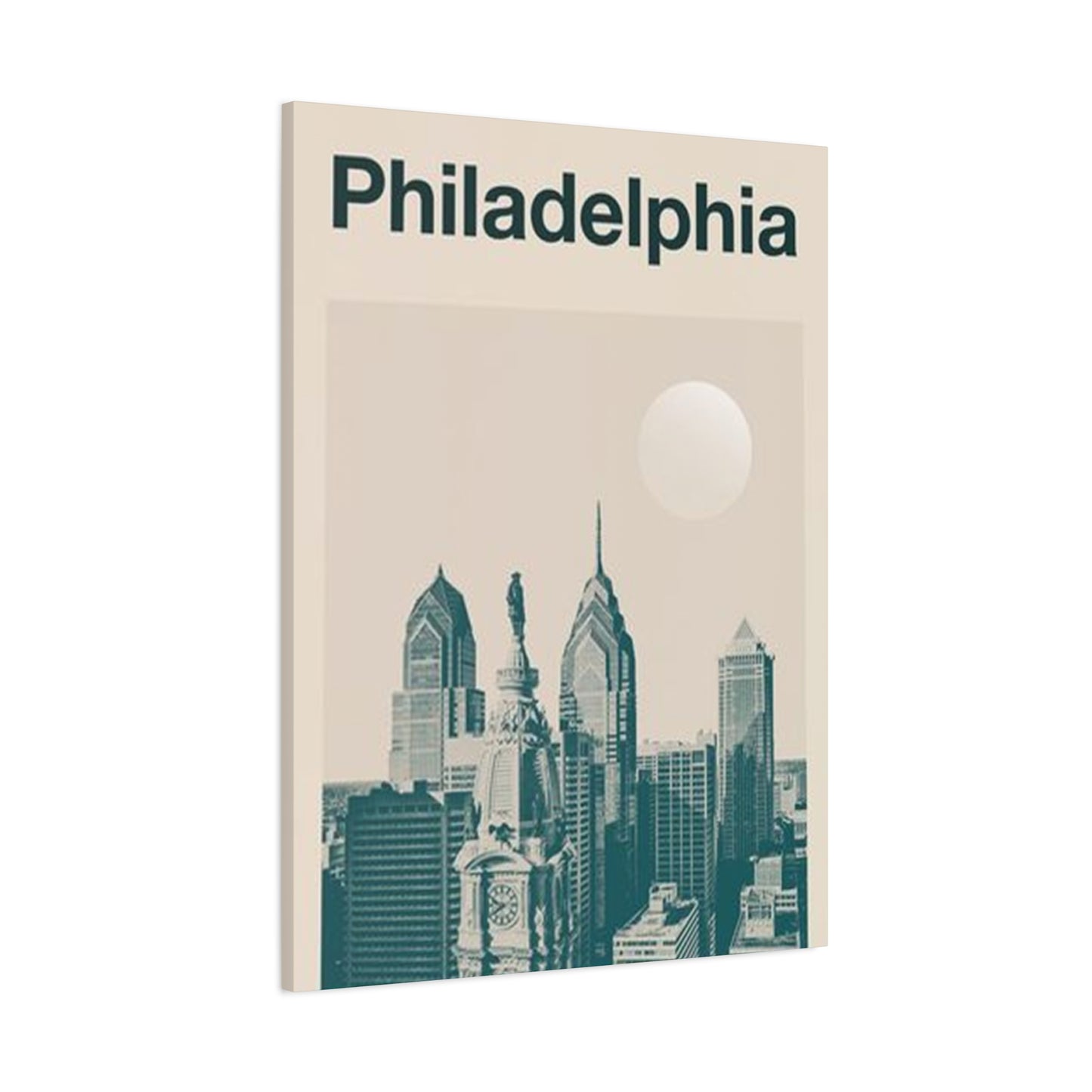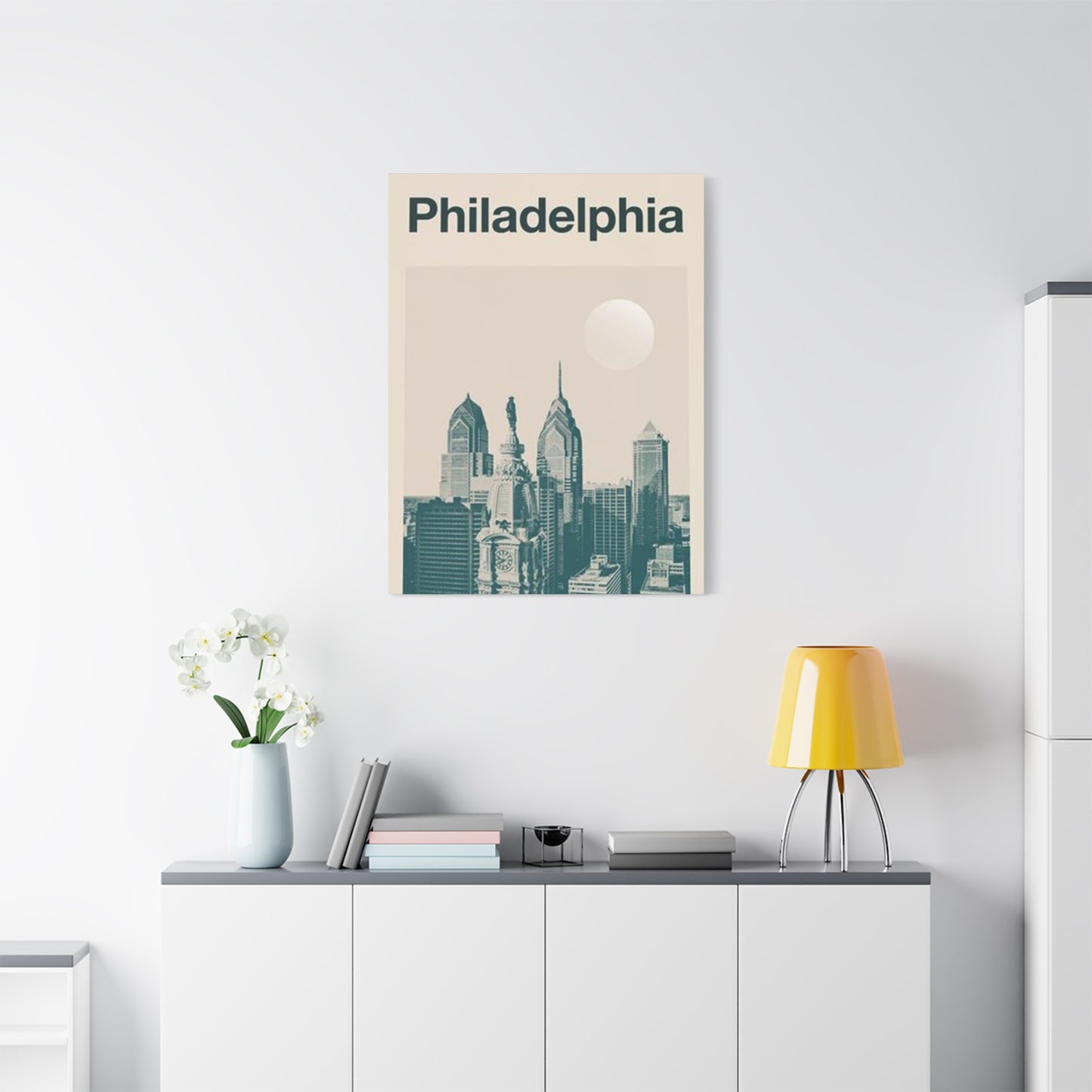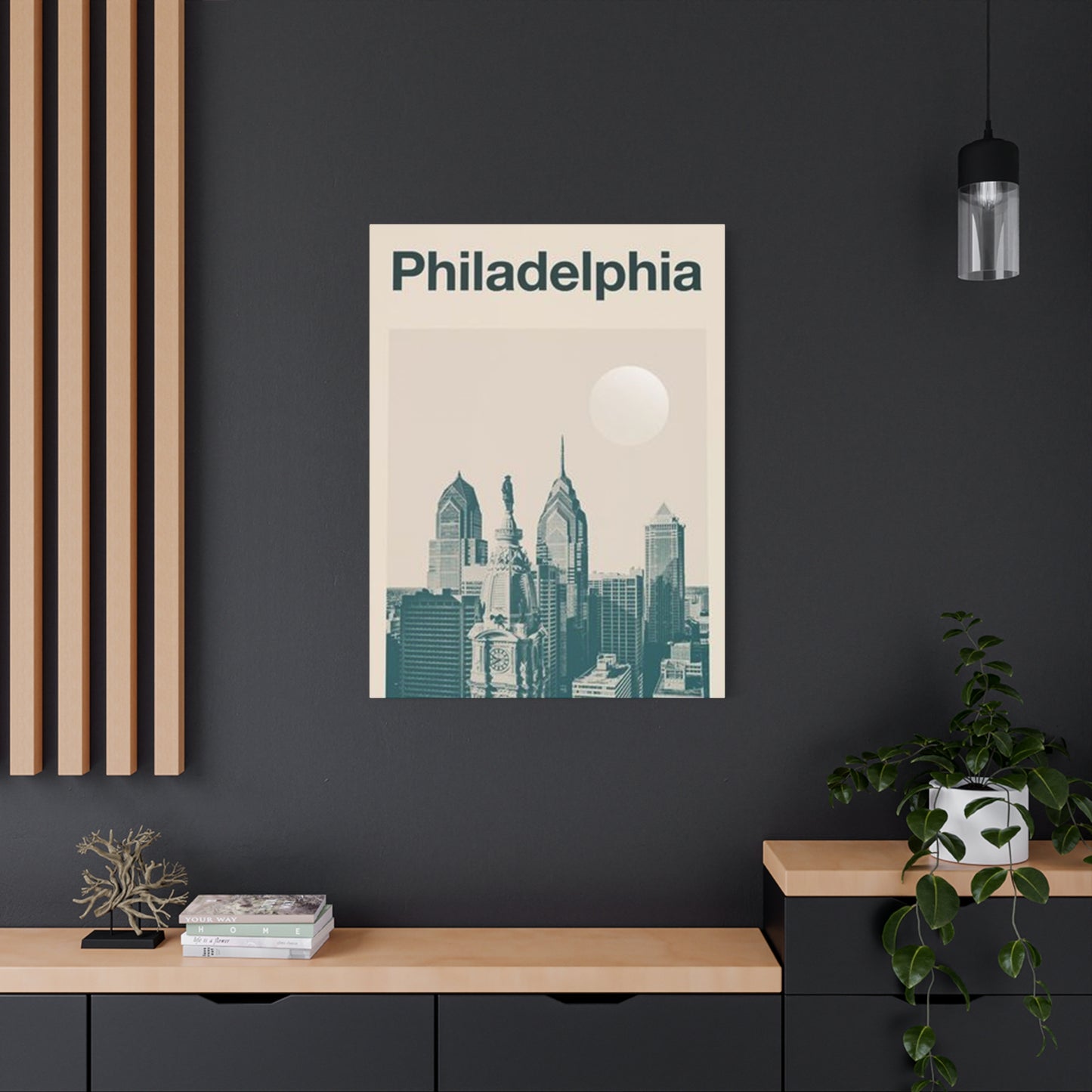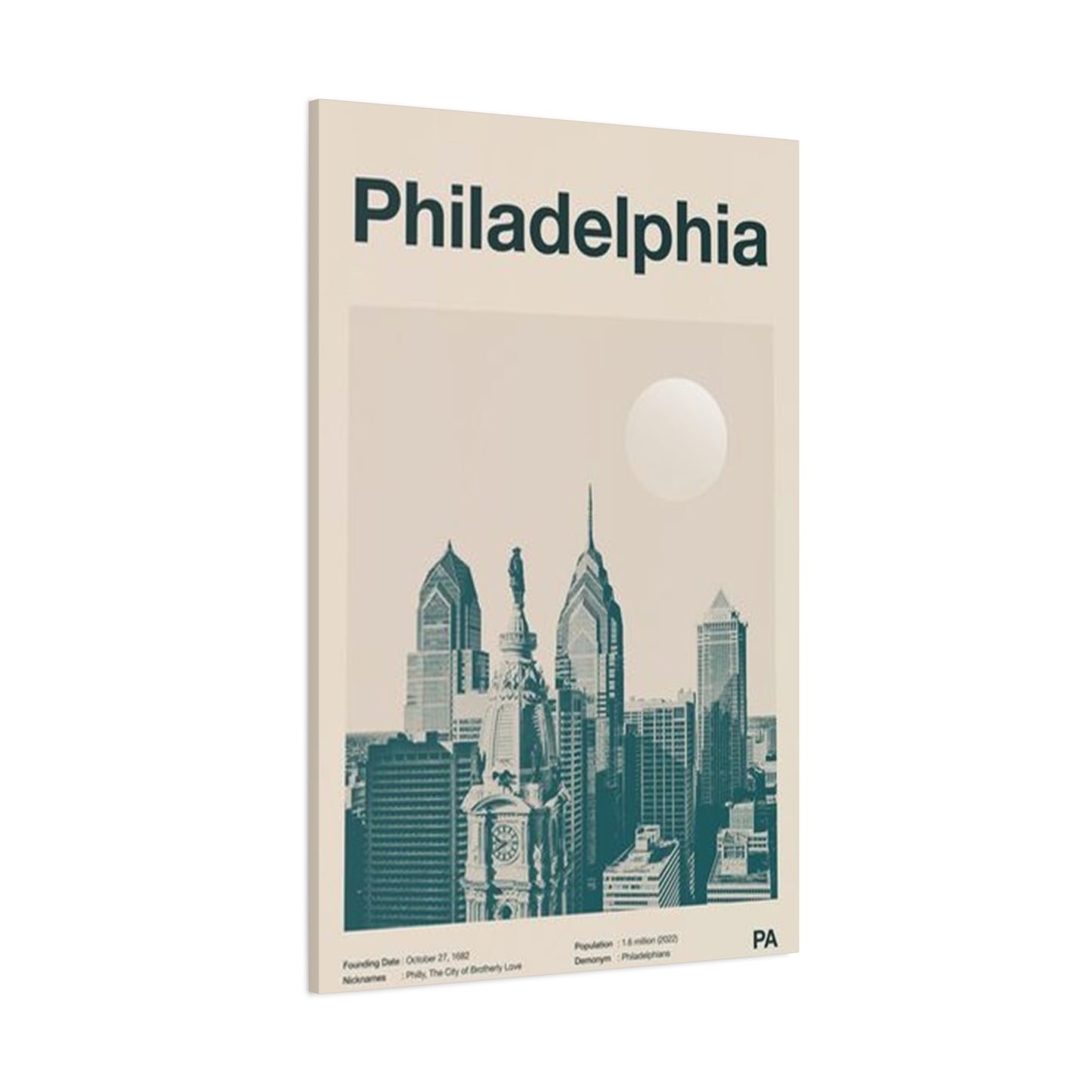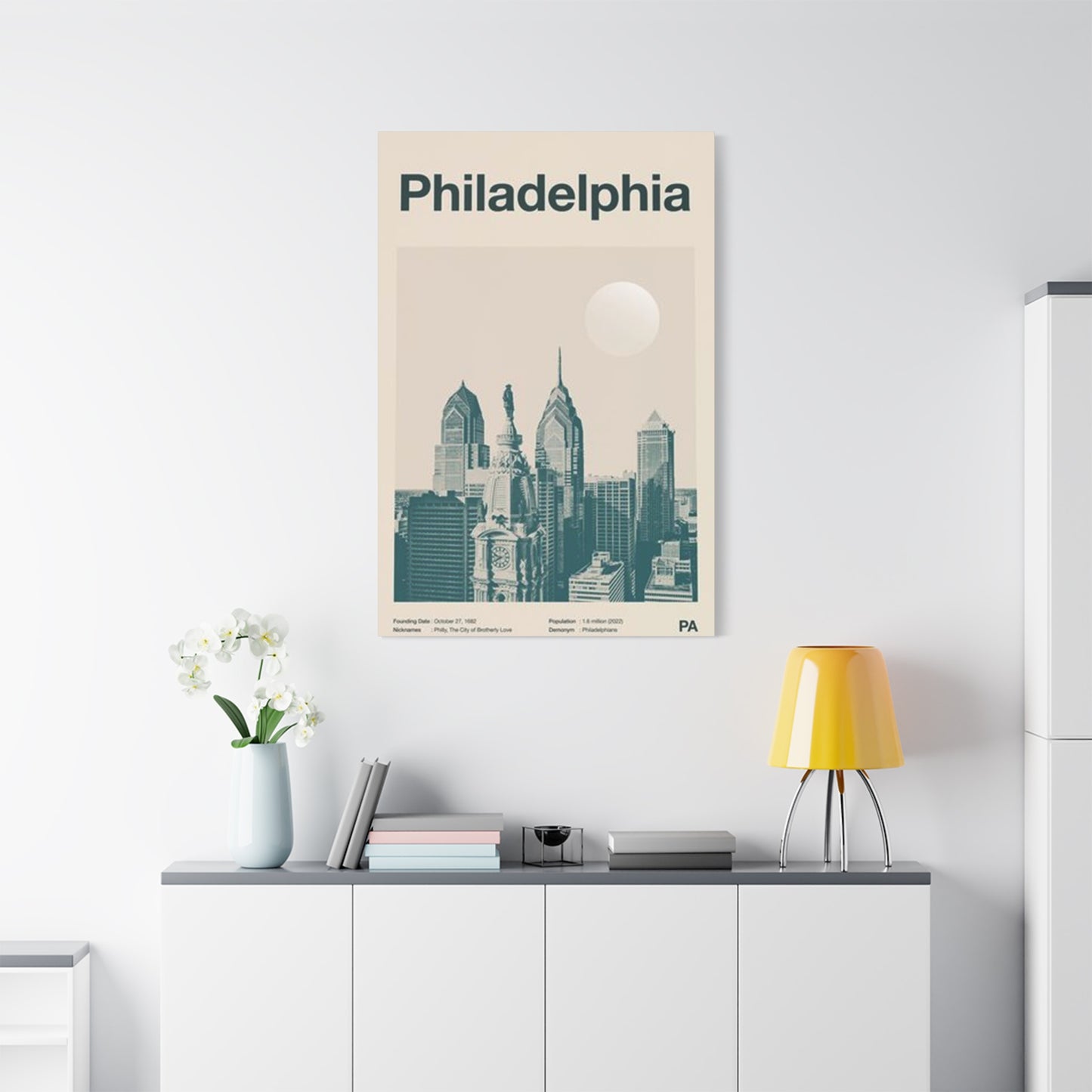A Deep Dive into the Iconic Buildings Featured in Philadelphia Pennsylvania Skyline Wall Art
The urban landscape of Pennsylvania's largest metropolis has become one of the most celebrated subjects in contemporary interior design. The architectural magnificence and distinctive character of this historic American city create endless opportunities for artistic interpretation and home decoration. This comprehensive exploration examines how metropolitan imagery transforms living spaces, offering insights into selecting, displaying, and appreciating urban-themed artwork that captures the essence of this remarkable Pennsylvania destination.
Capturing the Essence of Pennsylvania's Metropolitan Landscape
The distinctive silhouette of Pennsylvania's most populous city represents more than mere buildings against the horizon. It embodies centuries of American history, architectural innovation, and cultural significance. When translated into visual art for residential and commercial spaces, this urban panorama brings a sense of sophistication, connection to place, and contemporary elegance that few other subjects can match.
The architectural diversity found along the Delaware River waterfront creates a fascinating study in contrasts. Historic structures stand alongside modern glass towers, creating a timeline of American development visible in a single glance. This juxtaposition makes the cityscape particularly compelling for artistic representation, as each viewing angle tells a different story about the evolution of urban America.
Artists and photographers who focus on this metropolitan subject matter understand that timing, lighting, and perspective dramatically affect the final impression. The golden hour just before sunset bathes the buildings in warm amber tones, while the blue hour after twilight creates a cooler, more contemplative atmosphere. Night photography reveals the city's luminous character, with thousands of windows creating a tapestry of light against the darkened sky.
The seasonal variations add another dimension to urban landscape art. Spring brings fresh greenery to the parks that dot the cityscape, summer offers brilliant blue skies as backdrops, autumn introduces warm earth tones, and winter can transform the scene with dramatic weather conditions. Each season presents unique opportunities for capturing the metropolitan environment in ways that resonate with different aesthetic preferences.
Understanding the geography of this Pennsylvania city enhances appreciation for skyline artwork. The Schuylkill River curves through the western sections while the Delaware River defines the eastern boundary, creating natural vantage points for capturing the urban profile. These waterways reflect the city lights, doubling the visual impact and adding depth to photographic and painted interpretations.
The cultural significance of this metropolitan area extends beyond its physical appearance. As the birthplace of American democracy and home to numerous historical landmarks, the city carries symbolic weight that adds meaning to its visual representation. Displaying artwork featuring this skyline connects inhabitants to this rich heritage while celebrating contemporary urban life.
City Lights Transform Interior Spaces with Urban Energy
Illuminated urban landscapes possess a unique ability to energize interior environments. The interplay of artificial light against architectural forms creates dynamic compositions that draw the eye and stimulate conversation. When darkness falls over the Pennsylvania metropolis, a transformation occurs as buildings become beacons, their windows glowing with activity and purpose.
The psychology of lighting in artwork deserves consideration when selecting pieces for specific rooms. Bright, vibrant depictions of illuminated cityscapes can invigorate spaces designated for social interaction or creative work. The energy conveyed through thousands of lit windows suggests activity, opportunity, and the pulse of urban life. These qualities make such artwork particularly suitable for home offices, creative studios, or entertainment areas where stimulation and engagement are desired.
Contrast plays a crucial role in the effectiveness of nighttime urban imagery. The darkness of the sky provides a canvas against which architectural lighting creates striking patterns. Skilled photographers and artists manipulate exposure and contrast to emphasize this relationship, producing images that seem to glow from within. This luminous quality adds a dimensional aspect to flat surfaces, creating the illusion of depth and space.
Color temperature in urban night photography varies depending on the light sources captured. Older sodium vapor lights cast warm orange glows, while modern LED installations tend toward cooler white or blue tones. Some contemporary buildings feature programmable lighting systems that change colors for special events or seasons, adding temporal interest to the urban landscape. Artwork capturing these varied light sources creates complex color palettes that can complement diverse interior design schemes.
The placement of illuminated cityscape artwork requires thoughtful consideration of viewing conditions. Unlike pieces meant to be appreciated in bright daylight, representations of nighttime urban scenes often benefit from more subdued ambient lighting. This allows the luminous qualities of the artwork to stand out, mimicking the experience of viewing the actual nighttime skyline. Some collectors use accent lighting to further enhance this effect, directing focused beams toward the piece to emphasize particular elements.
Scale considerations become particularly important with illuminated urban imagery. Large-format presentations create immersive experiences, making viewers feel as though they could step into the scene. Smaller pieces offer intimate glimpses of specific architectural details or focused compositions that work well in collections or gallery walls. The intended emotional impact should guide size selection, with grander scales producing more dramatic effects.
The technical aspects of capturing urban illumination present challenges that separate exceptional work from ordinary photography. Long exposure times smooth moving elements like traffic while maintaining sharpness in stationary structures. Balancing exposure across bright light sources and darker shadows requires expertise in both capture and post-processing. The best urban night photography demonstrates mastery of these technical demands while maintaining artistic vision.
Modern Architecture Meets Timeless Appeal in Urban Art
The Pennsylvania metropolitan skyline presents a fascinating convergence of architectural eras, where contemporary glass towers rise near historic buildings that have stood for centuries. This temporal layering creates visual interest that transcends mere documentation, offering commentary on progress, preservation, and the evolution of urban environments.
Modern skyscrapers with their clean lines and reflective surfaces represent current architectural philosophy emphasizing transparency, efficiency, and vertical density. These structures interact with light in complex ways, their glass facades acting as mirrors during daytime hours and transforming into illuminated volumes after dark. Artists who focus on these modern elements often emphasize geometric precision and the interplay of reflection and transparency.
Historic structures within the skyline provide anchoring points that connect present to past. These buildings, constructed with masonry, ornamental details, and human-scale proportions, offer textural contrast to their modern neighbors. The preservation of these architectural treasures within a thriving modern city demonstrates a commitment to honoring heritage while embracing progress. Artwork highlighting this juxtaposition appeals to viewers who appreciate both innovation and tradition.
The concept of classic charm in modern contexts extends beyond individual buildings to encompass urban planning philosophies. Wide boulevards lined with trees, public squares that encourage gathering, and waterfront promenades that connect communities all contribute to the character of the metropolitan environment. Artwork that captures these planning elements alongside architectural achievements presents a more complete picture of urban life.
Material contrasts within the skyline create visual texture that enriches artistic interpretations. Stone, brick, glass, steel, and concrete each interact differently with light and weather, producing varied surfaces that challenge artists to capture accurately. The best urban landscape work demonstrates attention to these material qualities, rendering them in ways that communicate weight, transparency, or luminosity as appropriate to each substance.
Seasonal changes affect modern and historic structures differently, providing year-round interest in skyline imagery. Glass towers reflect autumn foliage from nearby parks, creating unexpected bursts of warm color within otherwise cool-toned compositions. Snow accumulates on the ledges and rooflines of older buildings, emphasizing their architectural details and creating stark contrast with vertical glass surfaces that shed precipitation immediately.
The human element adds life to architectural compositions that might otherwise feel static. Tiny figures on sidewalks, boats on rivers, and moving vehicles all suggest the city as a living organism rather than a collection of inanimate structures. Artists who include these elements, even at small scales, create work that resonates more deeply with viewers by acknowledging the true purpose of urban environments as places where people live, work, and connect.
Twilight Hours Bring Magical Qualities to Canvas Presentations
The transitional period between day and night offers photographers and artists the most dramatic lighting conditions for capturing urban landscapes. During these precious minutes, the natural light from the fading sun balances perfectly with the artificial illumination from buildings, creating a luminous atmosphere that cannot be replicated at any other time.
This transitional lighting phenomenon results from the specific position of the sun below the horizon. Civil twilight occurs when the sun is less than six degrees below the horizon, providing enough ambient light to see without artificial sources. Nautical twilight extends to twelve degrees below the horizon, while astronomical twilight reaches to eighteen degrees. The period most prized by urban photographers typically falls within civil twilight when the sky retains rich color while building lights become visible.
The color palette available during these transitional hours ranges from warm golds and oranges near the horizon to deep blues and purples in the upper atmosphere. This natural gradient provides a stunning backdrop for architectural silhouettes, eliminating the stark contrast of full darkness while maintaining the drama of illuminated buildings. Canvas presentations capturing this moment preserve the transitory magic in permanent form.
Cloud formations during twilight hours add another dimension to urban landscape imagery. High cirrus clouds often catch and reflect sunlight long after it has faded from ground level, creating streams of pink and orange across the sky. Lower clouds can add moody atmosphere or create dramatic breaks through which light streams. The interaction between sky conditions and urban illumination makes each twilight unique and unrepeatable.
Technical considerations for capturing twilight scenes differ from both daytime and nighttime photography. Exposure settings must balance the rapidly changing ambient light with consistent artificial sources, requiring quick adjustments and often multiple exposures blended together. Color balance becomes particularly challenging as the warm tones of sunset mix with the varied color temperatures of urban lighting. Skilled practitioners produce images that feel natural despite these technical complexities.
The emotional resonance of twilight imagery connects with universal human experiences of transition and change. The ending of day and beginning of night carries metaphorical weight that adds depth to visual representations. Artwork capturing these moments often evokes contemplative responses, making such pieces particularly suitable for private spaces like bedrooms or personal offices where quiet reflection is valued.
Displaying twilight urban imagery requires consideration of how the piece will be lit in its intended location. Natural light from windows will cause the artwork to appear different at various times of day, potentially creating interesting parallels between the depicted twilight and the actual lighting conditions in the room. Artificial lighting should be adjustable to allow the full tonal range of the image to be appreciated under different viewing conditions.
Urban Radiance Defines Contemporary Pennsylvania Art Prints
The luminous quality of metropolitan environments after dark has become a defining characteristic of contemporary art focused on Pennsylvania's largest city. This radiance results from the cumulative effect of thousands of individual light sources combining to create an ambient glow that transforms the urban environment into something almost otherworldly.
Print technology has advanced dramatically in recent years, allowing faithful reproduction of the subtle tonal gradations and color relationships found in urban night photography. High-quality giclée printing uses archival pigment inks that maintain color accuracy and resist fading over decades, ensuring that the captured radiance remains vibrant throughout the artwork's lifespan. These technical capabilities make contemporary prints viable alternatives to original photographs for most collectors.
The selection of paper or canvas substrate significantly affects the final appearance of urban prints. Glossy papers can enhance the luminous quality of light sources but may create unwanted reflections under certain lighting conditions. Matte surfaces reduce glare but may slightly diminish the brightness of highlighted areas. Canvas provides texture that adds physical dimension but requires careful profiling to maintain color accuracy. Understanding these trade-offs helps collectors make informed decisions aligned with their aesthetic preferences and display conditions.
Limited edition prints offer collectors the satisfaction of owning work that maintains exclusivity while remaining more accessible than unique originals. Numbering conventions typically indicate both the print number and edition size, such as fifteen out of one hundred. Lower numbers within editions sometimes command premium prices among serious collectors, though the artistic and technical quality remains consistent throughout properly produced editions.
The frame selection for urban radiance prints dramatically influences the overall presentation and how the artwork integrates with surrounding décor. Simple, thin frames in black or metal tones allow the image to dominate, making this approach suitable when the artwork itself provides sufficient visual interest. Wider mats create breathing room between image and frame, preventing the composition from feeling cramped. Float mounting, where the print appears to hover within the frame, adds contemporary sophistication particularly appropriate for modern urban subjects.
Size considerations for Pennsylvania urban prints balance the desired visual impact against practical constraints like available wall space and budget. Large-scale presentations create commanding focal points that can anchor entire room designs. Medium sizes work well as part of gallery walls or in spaces where multiple artworks share attention. Smaller prints allow collectors to acquire work from sought-after photographers or limited editions that might be unaffordable at larger scales.
The geographic specificity of Pennsylvania urban imagery appeals to residents, former inhabitants, and visitors who developed connections to the city. For these audiences, the artwork serves not merely as decoration but as a tangible link to place, memory, and identity. This emotional connection often makes location-specific art more meaningful to owners than generic urban imagery, despite the latter potentially offering similar aesthetic qualities.
Dynamic Movement Captured in Metropolitan Visual Art
The perception of motion within static images creates visual energy that engages viewers and sustains interest over time. Urban environments inherently contain movement through traffic, pedestrians, weather, and changing light, all of which can be captured or suggested through various photographic and artistic techniques.
Long exposure photography provides the primary tool for visualizing motion in urban landscape work. When exposure times extend to multiple seconds or even minutes, moving elements blur while stationary structures remain sharp. Vehicle headlights and taillights become streams of light tracing the paths of traffic through the city. Clouds blur into soft masses that contrast with crisp architectural details. This technique transforms the frenetic energy of urban life into smoothed, almost meditative visual elements.
The direction and pattern of motion lines created through long exposure add compositional strength to urban imagery. Streets converging toward a vanishing point gain additional emphasis when highlighted by light trails. Circular patterns emerge in images capturing traffic around roundabouts or rotaries. The careful positioning of the camera and timing of the exposure allow photographers to craft these motion elements as deliberately as they compose the stationary aspects of the scene.
Water in motion adds another dimension to urban landscape work, particularly in cities like this Pennsylvania metropolis situated along major rivers. Long exposures smooth water surfaces into mirror-like planes or misty veils, depending on the speed of current and length of exposure. Fountains become ethereal columns of light and water, their individual droplets merging into continuous forms. These effects create dreamlike qualities that elevate documentary urban photography into more artistic realms.
The suggestion of movement through compositional choices works even in images captured at fast shutter speeds that freeze action. Diagonal lines create dynamic tension compared to horizontal and vertical elements that convey stability. Overlapping planes suggest depth and therefore the spatial dimension through which movement occurs. Careful placement of visual elements can guide the viewer's eye through the composition in deliberate sequences, creating a sense of journey through static imagery.
Human figures in urban scenes, even when small within the overall composition, introduce the concept of potential movement. Viewers understand that people move through environments, so the presence of figures suggests ongoing activity beyond the captured moment. The direction figures face and their body postures provide clues about movement direction and pace, enriching the narrative dimension of urban imagery.
Weather conditions introduce visible movement through rain, snow, or wind effects. Falling precipitation becomes visible through streaks or patterns captured during exposure. Wind moves flags, signs, and vegetation, creating blur or directional emphasis. Dramatic weather also affects the appearance of the city itself, with rain-slicked streets reflecting lights and creating mirror images, or fog partially obscuring distant structures while emphasizing nearer elements.
The psychological impact of implied motion in urban artwork energizes spaces and suggests vitality. Rooms decorated with dynamic urban imagery feel more alive and connected to the pulse of city life compared to those featuring static compositions. This quality makes motion-rich urban art particularly suitable for spaces where energy and engagement are desired, such as creative studios, exercise areas, or social gathering spaces.
Sophisticated Style Emerges from Urban Illumination Themes
The aesthetic philosophy underlying urban illumination artwork balances documentation with interpretation, technical precision with artistic vision, and specific place identity with universal urban themes. This sophisticated approach elevates cityscape imagery beyond mere photography into a recognized genre of contemporary art.
Style in urban illumination work manifests through choices about color treatment, contrast levels, and emphasis of particular elements. Some artists favor highly saturated colors that emphasize the vibrancy and energy of urban environments, while others prefer more subdued palettes that create contemplative moods. Neither approach is inherently superior; both serve different aesthetic purposes and appeal to different viewer sensibilities.
The grain structure or digital noise characteristics of urban night photography contribute to the overall style and feel of the work. Perfectly clean images with no visible grain produce a polished, almost hyperreal quality that emphasizes technical mastery. Visible grain, whether from film photography or intentionally preserved in digital work, adds texture and can evoke nostalgia for earlier eras of urban photography. Contemporary artists make deliberate choices about these characteristics based on the emotional tone they wish to achieve.
Composition styles in urban illumination work range from symmetrical, centered arrangements that emphasize order and balance to asymmetrical compositions that create tension and dynamism. The rule of thirds, leading lines, and framing devices all appear in skilled urban photography, but the most sophisticated work demonstrates when to follow these guidelines and when to deliberately violate them for greater impact.
The integration of urban illumination themes into residential and commercial design requires coordination between artwork and surrounding elements. Contemporary minimalist interiors provide neutral backdrops that allow dramatic urban imagery to command attention without competing visual elements. More traditional or eclectic spaces benefit from careful coordination of color palettes and thematic elements to ensure coherent overall design.
The cultural associations of urban themes influence how illuminated cityscape artwork affects space perception and mood. Cities represent opportunity, diversity, culture, and energy, all positive associations that transfer to spaces decorated with urban imagery. The specific city depicted adds another layer of meaning, with different metropolitan areas carrying distinct cultural identities and associations.
Collecting urban illumination art can develop into a focused pursuit that rewards research and engagement with the medium. Understanding different photographers' distinctive styles, recognizing technical excellence, and developing personal aesthetic preferences all enhance the collecting experience. The most satisfying collections demonstrate coherent vision while showing range within the chosen theme.
The longevity of style trends in urban art shows that while specific treatments may fluctuate in popularity, the fundamental appeal of illuminated cityscapes remains constant. This enduring appeal makes quality urban artwork a relatively safe design investment that will maintain relevance across changing décor fashions. The key lies in selecting work of genuine artistic merit rather than trendy pieces that may quickly feel dated.
Striking Perspectives Define Contemporary Canvas Urban Art
The viewpoint from which an urban landscape is captured fundamentally shapes the viewer's experience and emotional response to the work. Contemporary photographers and artists explore diverse perspectives, from elevated vantage points that provide comprehensive overviews to street-level angles that emphasize human scale and immersive engagement with the urban environment.
Aerial perspectives, whether captured from tall buildings, helicopters, or drones, reveal urban patterns and organization invisible from ground level. The geometric arrangement of streets, the density variations across neighborhoods, and the relationship between built environment and natural features all become apparent from elevated positions. These perspectives emphasize the city as a planned entity, showcasing human capacity for large-scale organization and development.
The psychological effect of aerial urban views connects with human fascination with bird's-eye perspectives and the sense of control or understanding that comes from seeing complete systems. Displaying artwork with these perspectives in offices or study areas can reinforce feelings of competence, vision, and strategic thinking. The comprehensive view suggests mastery over complexity, a metaphor that resonates in professional and creative contexts.
Mid-level perspectives, often captured from medium-height buildings or bridges, balance overview with detail. These viewpoints show enough of the cityscape to communicate scale and context while maintaining sufficient proximity to appreciate architectural details and street-level activity. This balance makes mid-level perspectives particularly versatile for various display contexts, neither overwhelming small spaces nor disappearing in larger rooms.
Street-level perspectives immerse viewers in the urban experience, emphasizing the human scale and immediate sensory environment of city life. Looking up at towering structures conveys their imposing presence and vertical drama. These angles create more intimate, experiential artwork that connects with viewers on a more personal level than distant overviews. Street perspectives work particularly well in spaces where personal connection and human-scale experience are desired.
Reflections in water, glass, or other reflective surfaces add a layer of visual complexity to urban perspectives. The mirrored image creates symmetry while introducing distortion and abstraction that moves the work toward artistic interpretation beyond straight documentation. Reflections also allow a single composition to show two views simultaneously, enriching the visual information and creating more complex relationships between elements.
Unconventional angles and framings demonstrate artistic vision beyond technical competence. Tilted horizons create dynamic tension, extreme close-ups abstract architectural elements into geometric studies, and unusual cropping challenges viewers to see familiar subjects in new ways. These approaches show that the photographer or artist brings interpretive vision to the subject rather than merely recording what exists.
The selection of perspective should align with the intended display location and desired emotional impact. Comprehensive aerial views suit spaces where overview and organization matter, while intimate street perspectives better serve personal spaces where connection and experience are valued. Understanding these relationships allows collectors to choose work that enhances their specific environments rather than simply acquiring technically excellent pieces that may not serve their spaces effectively.
Contemporary Metropolitan Themes in Residential Design
The integration of urban-themed artwork into residential environments represents a significant trend in contemporary interior design. This movement reflects changing attitudes toward city life, increased urbanization globally, and growing appreciation for architecture and design as art forms worthy of celebration in domestic spaces.
Living rooms benefit from large-scale urban artwork that serves as a focal point and conversation starter. A dramatic cityscape can anchor an entire seating area, providing visual interest that draws guests into engagement with the space. The sophistication associated with urban subjects elevates the perceived refinement of the environment, suggesting owners who value culture, design, and contemporary aesthetics.
Dining areas offer opportunities for urban artwork that enhances the social dining experience without overwhelming intimate conversations. Mid-sized pieces or collections of smaller works allow visual interest without dominating the space. The energy of urban themes contributes to the lively atmosphere appropriate for social gathering while maintaining sophistication suitable for formal occasions.
Home offices increasingly feature urban artwork that reinforces professional identity and provides visual stimulation during work hours. The associations of cities with commerce, innovation, and opportunity make metropolitan imagery particularly appropriate for work environments. The architectural content provides interest for the eye during breaks from screen time without being so compelling as to become distracting.
Bedroom design using urban themes requires careful consideration of emotional tone. Quieter, more contemplative urban scenes work better in restful spaces than highly energetic compositions. Twilight or early morning cityscape imagery can provide sophisticated decoration while maintaining the calm atmosphere conducive to relaxation and sleep. The key lies in selecting pieces with lower contrast and more subdued color palettes.
Hallways and transition spaces provide ideal locations for urban artwork, creating visual interest in areas that might otherwise feel utilitarian. A series of related urban images can create a gallery effect, transforming a simple corridor into a curated exhibition space. These transitional areas allow for more adventurous choices since viewers typically move through rather than spending extended time in these spaces.
Bathrooms might seem unlikely locations for urban artwork, but moisture-resistant printing technologies make this increasingly viable. Skyline imagery in bathrooms adds unexpected sophistication and can be particularly effective in powder rooms where guests will notice and appreciate the design choice. The key is ensuring proper framing and sealing to protect artwork from humidity and temperature fluctuations.
The coordination of urban artwork with furniture, textiles, and accessories completes the design vision. Pulling accent colors from the artwork into throw pillows, area rugs, or decorative objects creates cohesion and demonstrates intentional design rather than arbitrary decoration. The level of coordination should match the overall design style, with minimalist spaces requiring less repetition and maximalist rooms benefiting from more pronounced thematic consistency.
Pennsylvania's Metropolitan Beauty in Artistic Form
The specific characteristics of this Pennsylvania city's urban landscape provide distinctive visual elements that distinguish it from other American metropolises. Understanding these unique features enhances appreciation for artwork depicting this particular location and explains why it has become such a celebrated subject in urban photography and art.
The William Penn statue atop City Hall long served as the highest point in the skyline, creating a distinctive silhouette recognizable to residents and visitors alike. Modern skyscrapers now surpass this historic landmark, but its architectural presence remains significant in many skyline views. This transition from the historic statue as the dominant element to modern towers illustrates the city's evolution while maintaining connection to its founding history.
The distinctive shape of the Comcast Technology Center, with its blade-like profile, creates a dramatic vertical element in contemporary skyline views. This structure's lighting design includes programmable LED systems that change colors for various events and celebrations, adding temporal variation to the nighttime cityscape. Artists capturing this building must decide whether to show its standard appearance or document special lighting moments that may resonate with specific audiences.
The Benjamin Franklin Parkway creates a diagonal visual element cutting through the otherwise grid-based street plan, providing unique perspective opportunities not available in cities with purely orthogonal layouts. The parkway's European-inspired design connects City Hall to the Museum of Art, creating a cultural corridor lined with institutions, monuments, and green spaces that enrich urban imagery.
The Schuylkill River forms a natural boundary on the western edge of the downtown area, with multiple bridges creating architectural interest in their own right. The boathouses along Kelly Drive add picturesque elements in the foreground of many skyline compositions, connecting the urban environment with its recreational waterfront. These structures provide human-scale reference points that help viewers comprehend the size of the towers behind them.
The Art Museum's steps and neoclassical facade serve as a dramatic foreground element in many skyline compositions. The cultural associations of this landmark, strengthened through cinema, make it immediately recognizable to audiences far beyond the city itself. Including this element in skyline artwork adds narrative depth and specific place identity that generic urban imagery cannot achieve.
Historic districts like Society Hill and Old City contribute architectural diversity to the urban landscape, with low-rise colonial and federal buildings creating textural contrast with modern towers. This juxtaposition emphasizes the city's age and historical significance, distinguishing it from newer American cities that lack this architectural heritage.
The seasonal variations in this northeastern Pennsylvania city add visual interest across the calendar year. Autumn foliage in the parks provides bursts of warm color, winter snow can dramatically transform the urban environment, spring blooms add fresh vitality, and summer's hazy heat creates atmospheric effects in distance views. Collectors can build seasonal collections of urban imagery that rotate with the calendar, maintaining fresh visual interest year-round.
Artistic Excellence in Urban Landscape Photography
The technical and artistic skills required to produce exceptional urban landscape photography separate professional work from casual snapshots. Understanding these elements helps viewers appreciate quality work and guides collectors toward pieces that will provide lasting satisfaction and maintain value over time.
Exposure control represents perhaps the most technically demanding aspect of urban night photography. The extreme contrast between bright light sources and dark shadows challenges camera sensors and requires sophisticated understanding of exposure latitude. Skilled photographers use graduated filters, HDR techniques, or exposure blending to capture the full tonal range of night scenes while maintaining natural appearance.
Focus precision becomes critical when photographing urban architecture, where viewers expect sharp rendition of building edges and details. The narrow depth of field at wide apertures used for low-light photography requires careful focus point selection and sometimes focus stacking techniques to maintain sharpness throughout the composition. The best urban photography shows consistent sharpness across all important elements.
Color management from capture through printing demands technical expertise and calibrated equipment. The varied color temperatures of urban lighting create complex color relationships that must be accurately captured and reproduced. Professional workflow includes color-managed monitors, calibrated printers, and consistent use of color profiles to ensure final prints match the artist's vision.
Composition in urban photography draws on classical principles while addressing the specific challenges of architectural subjects. Parallel lines must remain parallel rather than converging unless convergence serves a specific artistic purpose. Horizons should be level unless a tilted perspective adds dynamic energy. The balance of negative space and built elements creates breathing room and prevents claustrophobic compositions.
Weather monitoring and timing separate dedicated urban photographers from casual practitioners. Knowing when conditions will produce dramatic skies, interesting atmospheric effects, or perfect light requires research, experience, and often multiple failed attempts. The willingness to return to locations repeatedly until conditions align with vision demonstrates commitment to excellence.
Post-processing expertise allows photographers to realize their artistic vision while maintaining natural appearance. The line between enhancement and manipulation requires ethical consideration, particularly in work presented as photography rather than digital art. Transparency about processing choices builds trust with collectors and maintains the integrity of the photographic medium.
The artistic vision that guides technical decisions ultimately determines the lasting value of urban photography. Technical perfection without compelling artistic direction produces competent but forgettable work. The combination of technical mastery with unique perspective, emotional resonance, and consistent vision creates artwork that transcends documentation and achieves lasting artistic significance.
Architectural Sophistication in Wall-Mounted Displays
The presentation of urban architectural imagery through professional mounting and framing transforms prints into finished artwork that enhances residential and commercial environments. The choices made in this presentation phase significantly affect the overall impact and longevity of the piece.
Museum-quality framing uses acid-free materials throughout the assembly to prevent chemical reactions that could damage artwork over time. Acid-free mats, backing boards, and mounting techniques ensure archival stability, protecting the investment in both the artwork itself and its presentation. This attention to conservation is particularly important for limited edition prints or work from sought-after photographers.
Glass selection affects both the appearance of framed work and its protection from environmental factors. Standard glass provides basic protection but can reflect light and diminish visibility under certain conditions. Non-reflective glass reduces these reflections but slightly reduces brightness and color saturation. Museum glass combines UV protection, minimal reflections, and excellent optical clarity at premium price points. Acrylic glazing offers lightweight shatter resistance, making it suitable for large pieces or installations in spaces where safety is a concern.
Frame profiles range from minimal metal frames that create contemporary, gallery-like presentations to substantial wood frames that add traditional elegance. The frame should complement rather than compete with the artwork, drawing attention inward toward the image rather than to itself. The finish and material should coordinate with the room's existing design elements while respecting the style of the artwork.
Mat selection influences the perceived refinement and importance of the piece. Wide mats create breathing room and emphasize the artwork as a precious object worthy of space and attention. Narrow mats or no mats at all produce more contemporary, immediate presentations that can make images feel larger and more immersive. Multiple mats in coordinating colors add depth and sophistication to traditional framing approaches.
Float mounting techniques create the appearance of the artwork hovering within the frame, casting subtle shadows on the backing that add dimensionality. This approach works particularly well with modern urban subjects, reinforcing the contemporary character of both subject matter and presentation. The visible edges of the paper or canvas become part of the overall aesthetic, requiring careful trimming and pristine condition.
Canvas gallery wraps offer an alternative to traditional framing by extending the image around the edges of a stretched canvas, creating a three-dimensional object that can be displayed without additional framing. This approach works well with graphic, bold urban imagery where edge details are not critical. The depth of the stretcher bars affects the shadowline and overall presence of the piece on the wall.
Lighting design for displayed artwork dramatically affects visibility and impact. Picture lights mounted to frame tops provide focused illumination that enhances viewing while adding sculptural interest through the light fixture itself. Track lighting offers flexibility in positioning and adjusting light direction. Careful positioning prevents glare and hot spots while ensuring adequate illumination for comfortable viewing.
Inspirational Qualities of Metropolitan Imagery
The psychological and emotional effects of displaying urban landscape art in residential environments extend beyond mere decoration to influence mood, aspiration, and self-conception. Understanding these influences helps explain the enduring popularity of cityscape themes in contemporary interior design.
Aspirational qualities inherent in urban imagery connect with viewers' ambitions and ideals. Cities represent achievement, opportunity, and the fulfillment of potential. Displaying urban artwork can serve as daily visual reinforcement of professional and personal goals, keeping aspirations present in consciousness. This effect is particularly strong for individuals who either live in the depicted city and take pride in their location or aspire to relocate to urban environments.
The sophistication associated with urban living transfers to environments decorated with metropolitan imagery. Guests perceive spaces featuring quality cityscape art as refined and cultured, reflecting positively on the inhabitants' taste and worldview. This social signaling, while perhaps superficial, nonetheless influences how we present ourselves through our living environments.
Connection to place constitutes a powerful motivation for displaying location-specific urban artwork. For individuals with strong ties to the depicted city, whether through current residence, formative years spent there, or memorable visits, skyline imagery serves as a constant connection to meaningful places. This geographic tethering provides comfort and identity affirmation.
The energy and vitality of urban subjects can counterbalance isolated or quiet living situations. Individuals in suburban or rural locations sometimes incorporate urban artwork to maintain connection with metropolitan energy and culture. This creates visual interest and psychological stimulation that might otherwise be lacking in environments dominated by natural or residential scenery.
Architectural appreciation represents an intellectual engagement with urban imagery that rewards repeated viewing. Understanding building styles, recognizing architects' work, and appreciating the interplay of forms, materials, and spaces adds layers of interest beyond surface aesthetics. This deeper engagement sustains interest over years of display, preventing the artwork from becoming merely background elements.
The temporal dimension of urban photography, capturing specific moments in time, creates historical documentation that gains meaning as time passes. Cities constantly evolve through construction, renovation, and demolition. Artwork preserving past configurations becomes increasingly valuable as memory objects that show the city as it once was.
The inspiration drawn from human achievement represented by skylines can motivate creative and professional pursuits. Viewing complex urban landscapes reminds observers of what human ingenuity and collaboration can produce. This subtle reinforcement of possibility and potential makes urban artwork particularly appropriate for spaces dedicated to creative work or personal development.
Vivid Color Palettes Define Urban Night Imagery
The color relationships and chromatic intensity found in nighttime urban photography create visual impact that distinguishes exceptional work from ordinary documentation. Understanding how color functions in these images enhances appreciation and guides selection of pieces that will work effectively in specific design contexts.
The contrast between warm and cool color temperatures creates much of the visual drama in urban night photography. Warm amber and orange tones from older street lighting or sunset remnants play against cool blue and violet tones from the night sky and modern LED lighting. This temperature contrast adds energy and visual interest while guiding the viewer's eye through the composition.
Complementary color relationships, particularly orange and blue, appear frequently in quality urban night photography because they occur naturally in these environments. The physiological response to these color combinations creates visual excitement and holds viewer attention. Artists who recognize and emphasize these relationships produce more compelling work than those who merely document what appears before them.
Color saturation levels significantly affect the mood and energy of urban imagery. Highly saturated presentations create vibrant, energetic impressions suitable for modern, bold interiors where visual impact is desired. Desaturated approaches produce moodier, more contemplative results appropriate for sophisticated spaces where subtlety is valued. Neither approach is universally superior; the choice should align with the intended environment and desired emotional effect.
The color cast of an image, whether warm or cool overall, influences emotional response and compatibility with interior color schemes. Warm-toned urban photography coordinates naturally with earth tones, wood finishes, and traditional design elements. Cool-toned work complements contemporary interiors featuring metal, glass, and neutral gray palettes. Recognizing these relationships helps ensure new artwork integrates harmoniously with existing design.
Selective color techniques, where most of the image is desaturated while specific elements retain color, can create striking effects in urban photography. However, this approach requires restraint to avoid cliché results. When executed thoughtfully, selective color can draw attention to particular architectural elements or create surreal, otherworldly impressions of familiar scenes.
Color grading in post-processing allows photographers to establish consistent aesthetic identities across their work. Some artists develop signature color palettes that become recognizable parts of their style. This consistency helps collectors build cohesive assemblages of work from a particular photographer or develop personal collections united by chromatic harmony.
The psychological associations of different colors influence how urban imagery affects space perception. Blue tones create calming effects and can make spaces feel cooler and more spacious. Warm orange and red tones energize and create feelings of warmth and coziness. Understanding these effects allows intentional use of color to achieve specific environmental goals.
Architectural Detail and Structural Beauty
The appreciation of individual buildings within urban landscapes adds a compelling layer of interest to metropolitan photography and art. While sweeping skyline panoramas capture the grand scale and overall character of a city, focusing on architectural details reveals the intricate artistry and engineering mastery that give each structure its unique identity and charm.Architects use facade composition as a primary way to impart visual interest and personality to a building. This involves a careful balance of rhythm, proportion, and materiality. The rhythm of windows—whether arranged in neat, repeating patterns or varied asymmetrically—establishes a cadence that can feel calming or dynamic. For example, the repetitive rows of arched windows on historic brick warehouses in Philadelphia tell a story of industrial heritage, while the sleek glass panels of modern Pittsburgh office towers reflect innovation and transparency.
The play of projection and recession, where parts of a facade jut outward or step back, creates light and shadow that add texture and depth to surfaces that might otherwise appear flat. These variations catch the eye and provide a tactile sense of movement and form, which can be beautifully captured in high-contrast black-and-white photographs or finely detailed drawings. Close-up images that highlight cornices, lintels, and moldings emphasize the craftsmanship of past eras, where every curve and corner was deliberately designed to balance function and aesthetics.
The materials used in construction also tell their own stories. Stone, brick, metal, glass, and concrete each convey different moods and eras. A weathered brownstone facade speaks of the 19th century’s architectural solidity and warmth, while polished steel and reflective glass celebrate the modern era’s quest for minimalism and lightness. Artists and photographers who specialize in architectural detail often highlight these textures to evoke sensory experiences. Imagine a photograph that captures the gritty texture of Pittsburgh’s steel trusses against a soft sky or a close-up watercolor of Philadelphia’s historic cast-iron balconies in intricate filigree. These details invite viewers to pause and appreciate the artistry woven into the urban fabric.
Beyond their aesthetic appeal, architectural elements often carry symbolic meaning. Columns, arches, and domes can reference historical traditions, civic pride, or cultural aspirations. For example, Philadelphia’s City Hall, topped with the statue of William Penn, is not just a building but a monument to leadership and vision. Artistic renditions that focus on these symbolic features can inspire a deeper emotional connection, making the art not just decorative but meaningful.
Conclusion
Philadelphia’s skyline, rich with iconic buildings, tells a compelling story of history, architecture, and urban evolution, making it a captivating subject for skyline wall art. This artwork not only celebrates the city’s unique architectural heritage but also serves as a visual narrative that connects viewers with Philadelphia’s vibrant identity. Through detailed depictions of landmarks like the Comcast Center, One Liberty Place, and the historic City Hall, the skyline art captures the dynamic interplay between tradition and modernity that defines this storied city.
Skyline wall art of Philadelphia goes beyond aesthetic appeal; it invites viewers to appreciate the architectural diversity and cultural significance embedded within the cityscape. Each building featured carries its own story, reflecting eras of growth, innovation, and resilience. For example, the towering skyscrapers symbolize economic progress and contemporary ambition, while older structures evoke the city’s colonial roots and historical importance. This juxtaposition makes Philadelphia’s skyline a powerful symbol of continuity and change.
Displaying Philadelphia skyline wall art in your living or working space creates a sense of connection to the city’s spirit. Whether you’re a native Philadelphian, a visitor who fell in love with the city, or simply an admirer of urban landscapes, this art brings a piece of Philadelphia’s energy and character into your environment. It also serves as an inspiring reminder of the city’s role in American history and its ongoing influence in culture, business, and architecture.
Moreover, the detailed portrayal of iconic buildings invites viewers to explore architectural styles—from neoclassical and gothic revival to modern glass towers—offering educational value alongside artistic beauty. This makes skyline wall art a meaningful addition to any collection, appealing to architecture enthusiasts, history buffs, and art lovers alike.
In conclusion, Philadelphia Pennsylvania skyline wall art is more than decorative—it is a celebration of a city’s identity, heritage, and evolution. It captures the essence of Philadelphia’s architectural landmarks, inspiring pride and connection. By incorporating this artwork into your space, you invite the timeless story of Philadelphia to enrich your surroundings and spark continual admiration for this remarkable urban landscape.

















